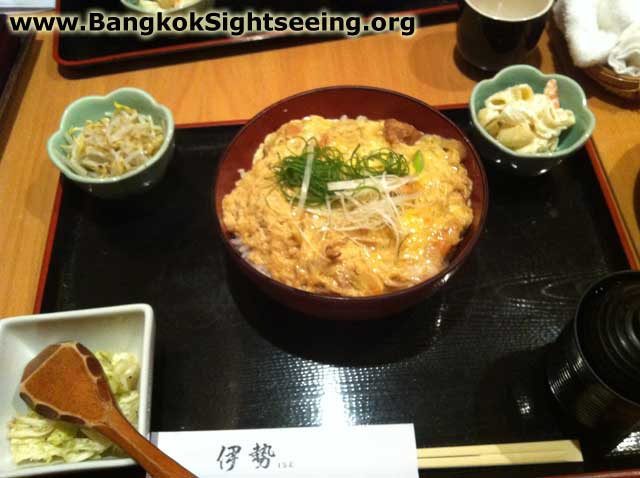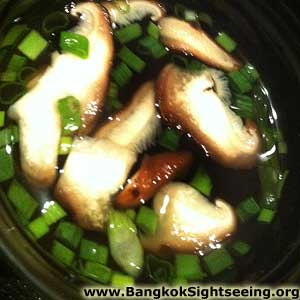Bangkok, March 4, 2011 — The Tourism Authority of Thailand (TAT) has announced the Songkran Splendours Festival campaign that offers visitors from all over the globe memorable experiences with a variety of delightful, traditional celebrations of the Thai New Year. As this year marks the auspicious occasion of His Majesty the King’s 84th birthday, the Songkran Splendours Festival is focusing on marvellous and engaging cultural events that will take place in Bangkok and 12 history-rich cities across Thailand during 7 to 19 April 2011.
“Songkran is the biggest and most important festival of the year when families and friends gather to celebrate the Thai New Year, honour their elders, and, of course, join in the fun of splashing each other. It’s like the Western holidays of Thanksgiving and Christmas rolled into one, and is very popular with visitors who want to experience true Thai sanook, or the fun, of this amazing festival,” said Mr Suraphon Svetasreni, Governor of the Tourism Authority of Thailand.
While renowned worldwide for its water-splashing street parties, Songkran stems from ancient traditions that are still observed. Songkran is a time for reunions, when families get together and renew their ties and honour family elders. The meaningful elements of Songkran are expressed through culture-rich ceremonies and rituals that reflect both the essence of “Thainess” as well as local beliefs and practices.
The word “Songkran,” which means “move into,” has its roots in the Sanskrit language. The water that symbolizes Songkran has an underlying significance, as it represents the cleansing and purification process. Songkran is actually the original Thai New Year, marking the end of a twelve -month cycle and the beginning of a new solar year.
During Songkran, community spirit is reflected in activities such as the spring-cleaning of temples, presenting merit-making offerings to monks, rituals in which Buddha statues and images are bathed with scented lustral water to show respect, building sand stupas and decorating temple grounds. Another charming Songkran tradition is showing gratitude to elders and respected individuals by pouring scented lustral water over their hands.
“The 2011 Songkran Festival is a very special one, as we will also honour the auspicious occasion of His Majesty the King’s 84th birthday. Visitors to Thailand will enjoy a richer cultural experience this year with a series of events planned for 13 locations nationwide to commemorate H.M. the King’s birthday. With the Songkran Splendours Festival, visitors can experience the unique ways in which people living in different areas of Thailand celebrate Songkran and experience many different aspects of Thailand’s heritage,” added Mr Suraphon.
The Songkran Splendours Festival features great activities and inspiring events in Bangkok as well as in 12 provinces across five regions of Thailand: the North, Northeast, Central, East, and South. While Chiang Mai and Sukhothai are key venues for visitors who want a northern Thailand Songkran experience, provinces in the Northeast; such as, Khon Kaen, Nakhon Phanom, and Nong Khai offer a somewhat different perspective on the festival. The Songkran Splendours Festival will also highlight Ayutthaya, Suphan Buri, and Samut Prakan, three provinces in Central Thailand. Beach lovers are welcome to celebrate Songkran in the eastern province of Chon Buri, which includes Pattaya, or in Phuket on the Andaman Sea. Visitors can enjoy Songkran with a southern flavour in Nakhon Si Thammarat and Hat Yai in Songkhla province.
Highlights of the Songkran Splendours Festival and the 13 provinces include:
Bangkok Songkran Splendours Festival (9-15 April 2011)
Visitors can explore how the Songkran Festival is celebrated among the four regions of Thailand at Nagaraphirom Park (Suan Nagaraphirom) and Wat Pho in Bangkok. They can sample a variety of Thai dishes and local desserts, see fabulous cultural performances, and visit the Nine Sacred Places. There are many more activities to choose from in areas of Bangkok including the Banglumphu community, Khao San Road, Phra Athit Road, Santichai Prakan Park, and Wisut Kasat, under the theme “Love Songkran in Your Home Town”.
Chiang Mai Songkran Festival, Chiang Mai (12-15 April 2011)
Chiang Mai, the Rose of the North, is renowned for one of the grandest Songkran celebrations in Thailand. Visitors can take part in the opening ceremony for the Songkran Festival 2011 with a wonderful parade around Chiang Mai city. They can also go local and pour some jasmine-scented water on a Buddha image and elders, enjoy Lanna-style cultural performances and traditions, and try out various northern foods along the streets.
Sukhothai Songkran Festival (11-15 April 2011)
In this north-central province, visitors will have a chance to watch the ordination of novices at Phaya Lithai Memorial Plaza, Si Satchanalai district, as well as at the Sukhothai Historical Park. The local Songkran celebration includes a variety of entertainment and performances, a parade, and food fairs. Visitors who want to immerse themselves deep into the roots of classic Thai culture must not miss exploring this city.
Songkran Festival and Dok Khun Siang Khaen Festival on Khao Nieo Road,
Khon Kaen (8-15 April 2011)
Khon Kaen lies in the heart of the Northeast. Here, visitors can experience the longest human wave in the world. Don’t miss the water splashing on “Sticky Rice Street” and the procession of decorated ox carts. There is also a variety of entertainment, folk plays, and a food fair at Kaen Nakhon Lake in Khon Kaen.
Nakhon Phanom Songkran Festival (12-15 April 2011)
At Sai Thong Sri Kottabun Beach in Mueang District and Renu Nakhon Municipality, Nakhon Phanom, visitors can join in a Buddha image bathing ceremony at the birthday pagoda. For a special cultural experience, visitors can take part in making a sand sculpture that is believed to bless people with good health, as well as watch a procession presented in the Renu Nakhon tradition.
Nong Khai Songkran Festival (6-18 April 2011)
Visitors can be enchanted by the beautiful procession at Wat Pho Chai and see water being sprinkled on the sacred Luang Pho Phra Sai Buddha image in Nong Khai province. Of course, there is plenty of water splashing, while the cultural heritage of the Mekong River area is celebrated through ethnic performances and entertainment.
Phra Nakhon Si Ayutthaya Songkran Festival (13 April 2011)
In Thailand’s ancient capital, Songkran celebrations will take place at various sites around the Phra Nakhon Si Ayutthaya City Island. Experience Buddhist merit-making and join the elephants and their mahouts for some Songkran water-splashing fun. Mon Songkran Celebrations will also be held at Wat Tong Bo in Sao Kradong in the Bang Pa-In district of Ayutthaya. There will be perfect photo opportunities in a procession of swan and centipede flags, as well as the Mon-style Buddha image bathing ritual.
The Great Songkran Day 2011 in Suphan Buri (13-14 April 2011)
Along Nean Kaew Road in Suphan Buri, in Thailand’s central region, visitors can enjoy a procession featuring the golden Luang Pho To Buddha image, along with other processions put together by public and private entities in the province. There will also be folk music performances, a Miss Songkran beauty contest, and water splashing with Suphan Buri artists.
Phra Pradaeng Songkran Festival, Samut Prakan (April 22-24 2011)
This is one of the few places in Thailand that celebrates the Songkran Festival in the Thai-Mon style, featuring a magnificent parade. Visitors can learn how to play saba, enjoy a Mon folk play, plus many other forms of entertainment, and see a procession of swan and centipede flags.
Chon Buri Songkran Festival (13-21 April 2011)
There are four key venues for the Songkran festival in Chon Buri province, which are Ko Si Chang, Wan Lai Bang Saen, Wan Lai Pattaya and Si Maha Racha. The “Kong Khao” Religious Ritual, which is also related to the Thai New Year, includes a procession of ‘kong khao’ floats and Buddha images, plus the ritual bathing of Buddha images. A must-see for visitors at Ko Si Chang is the tradition of local men carrying a lady to the sea and back, followed by a folk dance.
Songkran on the Beach, Phuket (10- 13 April 2011)
Visitors can join in a communal Thai New Year merit-making ceremony, witness a procession of Phra Phuttha Sihing Buddha images along Patong Beach, and pay homage to elders with scented lustral water. A range of events will be held at Loma (Dolphin) Public Park and the port, and the Jungceylon activity plaza overlooking Patong Beach.
Nakhon Si Thammarat Songkran Festival (11-15 April 2011)
Visitors to this southern province can participate in the Thai New Year by bathing the Phra Phuttha Sihing image. Other highlights include the Nang Kradan procession and a Swing Ceremony to welcome Phra Siva. Exciting activities will take place at Wat Phra Boromthat and Si Thamma Sokarat Park, Sanam Na Mueang, Phra I-suan Hall, and Phra Narai Hall.
Hat Yai Midnight Songkran Festival, Songkhla (9-15 April 2011)
The largest city in the south of Thailand celebrates Songkran with water-splashing, beauty pageants and other activities. The Midnight Songkran Festival also features late-night fun on Niphat Uthit Road in Hat Yai.
For more information on specific events, please visit TATnews.org at
http://www.tatnews.org or http://www.songkran.net




